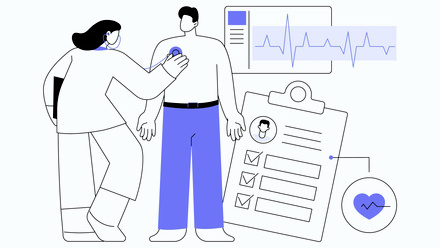How to use technology and data to better tailor benefits strategies

Why is this important? Because now, more than ever, as the economic crisis deepens, businesses need to be firing on all cylinders in order to ensure recovery. And that involves – amongst other things – making much better use of existing benefits and services: finding out who’s using what, why and when. And if they’re not using a benefit or service that would be relevant to them, why not. It’s only through gaining such detailed insights that you can better design programmes and better target communications to ensure usage and value.
So, to tune in to what your people really want, it’s vital to gain some insight into their wider hopes, dreams and fears. The next question is: how?
Employee surveys can be helpful, but they can also result in people asking for the impossible – and inevitably being disappointed with the outcome. Either that, or they don’t give you a true picture because they’re carried out too infrequently, and/or the results can become skewed according to how a person feels on that one particular day – they might have had a frustrating commute, for example, or a negative encounter with a colleague.
Workshops and focus groups, meanwhile, can provide useful insights, but only into the experiences of those who take part.
At EQ, we therefore believe the solution lies in combining your workplace benefits engagement data with third party intelligence, to reveal how your employees live when they are not at work.
To help our clients achieve this level of understanding, we have developed Amplify Insight, a unique tool that provides a comprehensive, three-dimensional view of your employees by doing just that.
Why communication is key
However generous your benefits programme, it can only be deemed a success if your employees understand, use and appreciate it.
So, communicating the advantages of the programme in a way that catches employees’ attention is crucial – especially given the recent mass shift to remote working.
That’s why our May 2020 Benefits Research with Employee Benefits shows that ‘better or more targeted communication of benefits’ is now the top priority for companies with a benefits strategy in place.
At EQ, we think the cornerstones of accomplishing this are:
- developing a holistic understanding of your workforce
- ensuring your benefits communications reach the right people via the right channels.
That’s why we have built a next-level employee analysis tool that offers both capabilities.
The Amplify Insight effect
Amplify Insight from EQ works by bringing real world insight and overlaying this with employment data, breaking it down into segments based on millions of data points.
The data, which is collected from a variety of sources, includes behavioural, lifestyle and geographical dimensions.
It’s also anonymised to postcode, making it completely GDPR compliant. And when combined with your proprietary workplace intelligence, it allows us to split your workforce into both segments and cohorts – or groups – who share a defining characteristic.
So, not only can you design a more relevant and valuable benefits programme, you can also ensure your benefits communications are tailored to reach those most likely to take advantage of the various elements of the scheme.
Amplify Insight in practice
When you receive an Amplify Insight report on your workforce, you will get a breakdown of the benchmarked benefit take up for each cohort and segment. This results in a much deeper understanding than you can get from more established data analysis techniques, such as splitting employees by age.
Take the 35 to 45 age bracket. Within this group alone, Amplify Insight can identify several cohorts with very different wants and needs. In big urban areas, for example, professionals in this age group have high living costs that mean they tend to prioritise job security and career development. But for manual workers living in smaller towns, work-life balance is a much bigger focus.
In other words, despite being the same age, these two cohorts are likely to respond very differently when it comes to their benefits preferences.
We’ve also gone further to understand more about peoples’ financial behaviours, setting milestones which help us assess their needs from a financial wellbeing programme.
Knowing this information is invaluable when it comes to ensuring employees are made aware of the workplace benefits with which they are most likely to engage.
The author is Tim Brook, head of engagement & platforms, EQ HR Solutions.
This is a sponsored article from EQ HR Solutions.
Supplied by REBA Associate Member, Equiniti
Hi we are EQ; some may know us as Equiniti! We provide specialist reward, benefits and payroll solutions.







